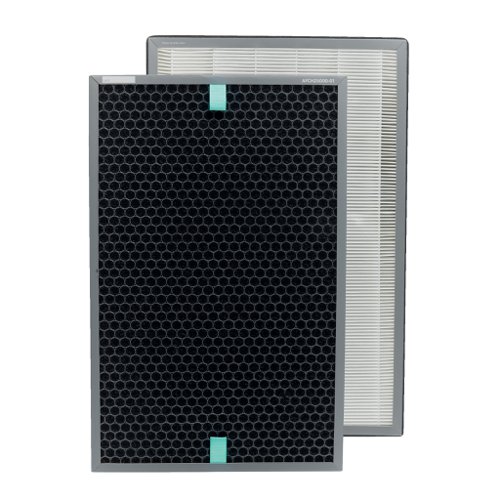The Leitz TruSens™ H13 HEPA replacement filter is for use with the Leitz TruSens Z-6000H Performance Series Air Purifier. Designed to improve indoor air quality in professional large spaces, Leitz TruSens Performance Series Air Purifiers remove impurities and fill rooms with fresher, cleaner air. The powerful clean air delivery rate (CADR) provides complete coverage, while the H13 HEPA filter with activated carbon works to reduce airborne virus exposure. These dual-sided filters are comprised of a H13 HEPA filter with highly efficient activated carbon honeycomb granules and a durable mesh pre-filter. The filter is central to the air purifying process and replacing it is essential for optimal air purifier performance. Cleaner air you can count on.
- Replacement filter for the Leitz TruSens™ Z-6000H Performance Series Air Purifier to improve air quality in large spaces
- EN1822 DIN standard dual-sided H13 HEPA filter with activated carbon to help capture even the smallest most difficult particles, viruses and bacteria, including 99.99% of airborne coronavirus*
- H13 HEPA filters capture a minimum of 99.95% of particulate matter between 0.1 and 0.2 micron (MPPS)
- The activated carbon filters volatile organic compounds (VOCs) caused by chemicals found in many everyday products used in offices and public buildings
- Features a durable and hand-washable mesh pre-filter for collecting larger particles such as dust
- The TRU-BEAM UV-C light in the air purifier inactivates viruses and bacteria trapped in the HEPA filter
- An indicator light on the air purifier will display when the filter needs to be replaced
- For optimum air purifier performance replace the filter on average every 12 months by simply opening the side panel filter doors
- The filter assembly used in the Leitz TruSens Z-6000H meets the requirements of H13 HEPA in accordance with EN 1822-1:2019 & EN ISO 29463-5:2018
- Pack includes 2 filters which are for use with the TruSens Z-6000H Performance Series Air Purifier
- *Results from independent third-party testing using aerosolized airborne concentration of human coronavirus 229E over a two-hour period in a sealed chamber
